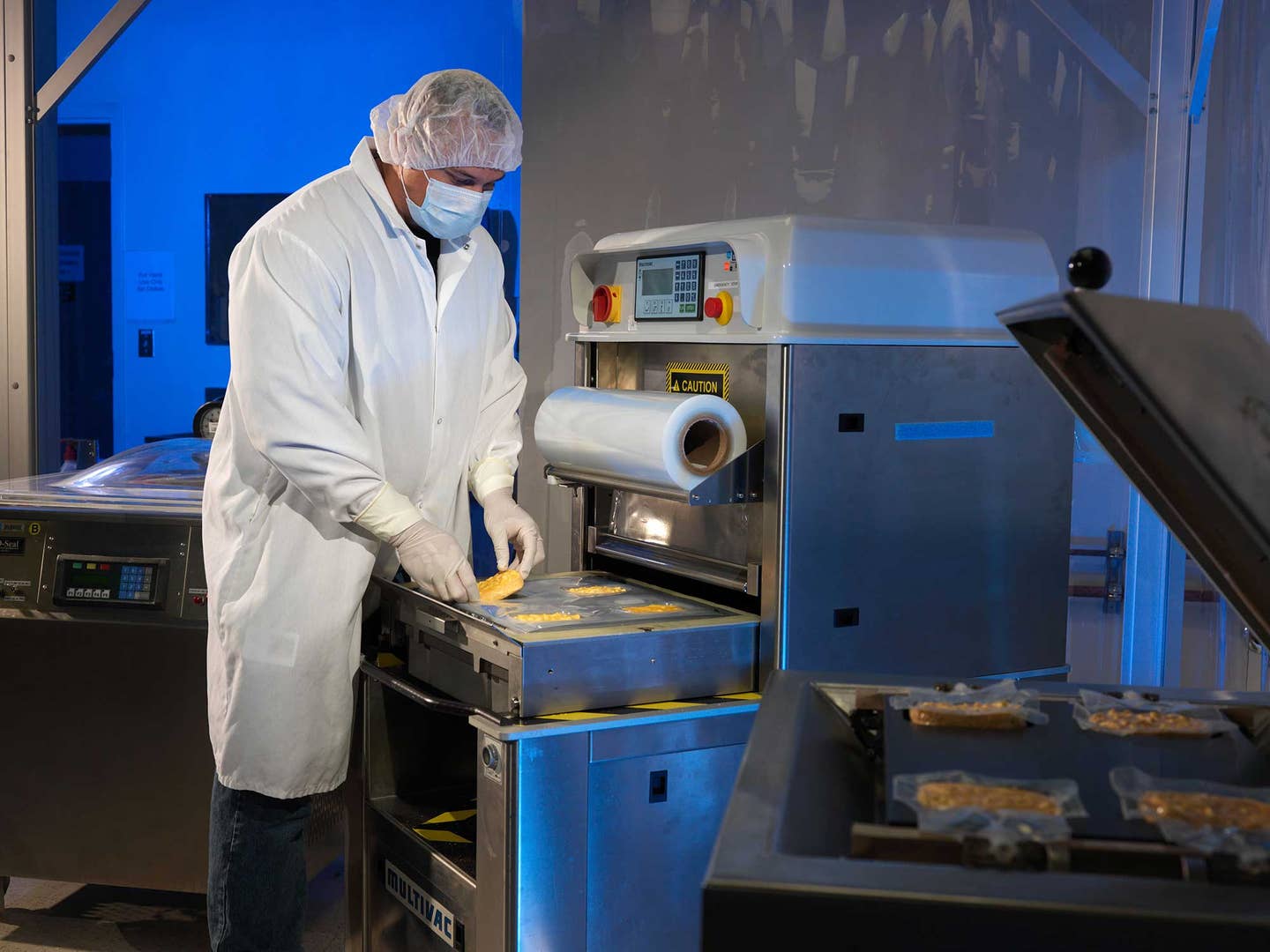
Spaghetti and Tacos: These Foods Are on the Menu on Mars
How NASA is redesigning space food for a long journey to the red planet
There's a lot more to astronaut food than just Tang and freeze-dried ice cream. For a three-year journey to Mars, NASA food technology scientists are redesigning space food to make the longer haul to the red planet, according to Wired. But this is no normal recipe testing: Scientists must design meals that are compact but also balance shelf-stability, nutrition, and taste. Mars bars won't suffice.
In the past, food for space missions was freeze-dried to prevent spoilage and food poisoning. All you had to do was add hot water. Foods that couldn't be freeze-dried were thermostabilized—packaged and steamed under pressure to destroy any harmful bacteria. This worked for missions averaging twelve months, but it won't be enough for a Mars trip, since blasting food with heat years before it's eaten can lower the nutritional quality and compromise taste.
Food technology scientist Dr. Grace Douglas is currently working at NASA’s Johnson Space Centre to improve upon these preservation methods in anticipation of a 2030 mission to Mars. The solution might be in new moisture-and oxygen-resistant packaging, as well as a refined thermostabilization method developed by her team.
But preserving food is far from her only challenge. Douglas must also consider the nutritional value of the meals to ensure the astronauts stay healthy in orbit. One challenge is that vitamins in food degrade over time when exposed to oxygen, so packaging must be incredibly airtight. She also has to count calories. In the microgravity environment of the ship, an astronaut’s skeleton and muscles are no longer used to support their bodies, leading to a decrease in bone and muscle mass. To avoid this, astronauts regularly hit the space gym (treadmills, exercise bikes, and weight machines on board), but they need calorie-rich foods to compensate for these workouts.
And of course, eating pre-packaged meals for weeks on end can become incredibly boring, so Douglas tries to create meals that are not only shelf-stable, but also varied and tasty. Astronauts on the International Space Station who didn't like the food or became bored with their options ultimately ate less and lost weight. Part of encouraging good eating habits is creating meals that the crew is familiar with, linking them to home from millions of miles outside its atmosphere. "Food is one of the very few things the crew members have that's familiar," Dr. Grace Douglas told Space Safety Magazine."If you think about how important food is to our everyday lives and our comfort, it's important to try and provide the crew with the best food system and most optimal nutrition possible on a long duration mission," she said.
Beyond sustenance, food is central to psychological and social health on the journey. Meals are a welcomed break on the spacecraft from work and a chance for crew members to come together in a relaxed, social setting. While Dr. Douglas’ research may not be rocket science, her work is key to getting a Mars journey off the ground and us closer to finally answering the question: is there life on Mars?
Keep Reading
Continue to Next Story










